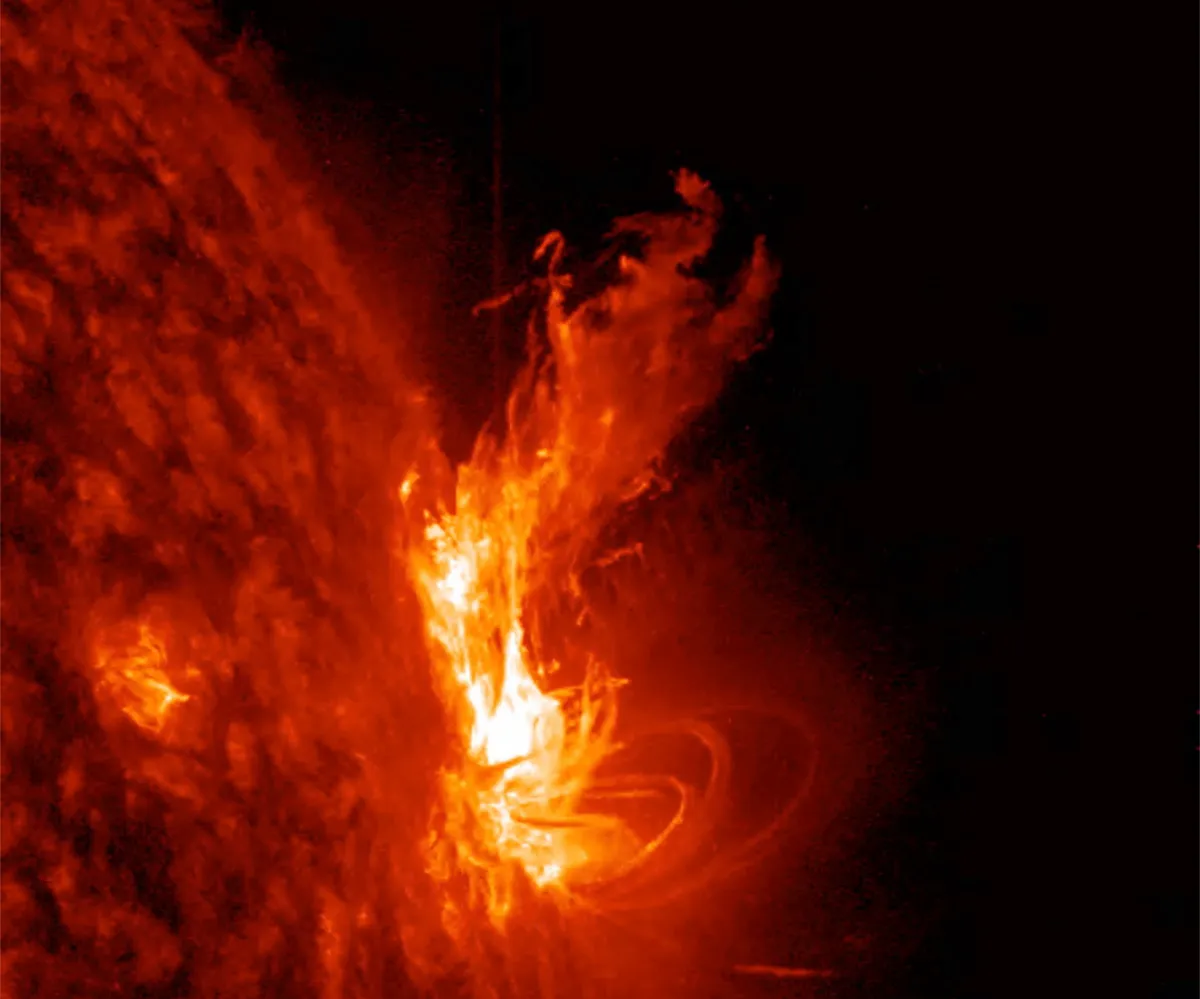Could exoplanets cause solar flares to occur at their host stars, simply by orbiting too close?
In many of the exoplanet systems discovered so far, the innermost planets orbit scorchingly tightly to their suns – often within only a few stellar radii.
Some are so close they’re effectively embedded within the rarefied upper atmosphere of the star itself – the corona.
Such close-in planets would be expected to significantly interact with the star’s magnetic field, so much so that they could even trigger solar flares.

Searching for exoplanet-induced flares
Ekaterina Ilin and her colleagues at the Leibniz Institute for Astrophysics Potsdam in Germany completed the largest systematic search for just such occurrences.
Flares – short-lived but intense increases in stellar brightness – are caused by the sudden release of energy from the contorted magnetic field of the star.
These outbursts usually occur randomly, but the researchers reasoned that if a close-in planet is magnetically interacting with its star, there should be a pattern in the timing of flares.
From our point of view, we would see a regular clustering of flares when the planet is in a particular part of its orbit.
Ilin and her team turned to the huge catalogue of data created by the Kepler and TESS (Transiting Exoplanet Survey Satellite) space telescopes.
These observatories were designed to hunt for exoplanets, but their frequent, precise measurements of the changing brightnesses of large numbers of stars are perfect for picking out flares.

The search begins
The team searched the archives for signs of flares from over 1,800 stars known to have a close-in planet: over half of known exoplanetary systems.
They compiled a catalogue of 1,169 individual flares in 92 planetary systems.
Then they focused on the 25 stars where they’d observed at least three energetic flares.
They analysed timings to see if they were bunched in phase with the innermost planet’s orbit, rather than being uniformly distributed.
Most of the stars they narrowed down to didn’t show any evidence of flare clustering.
This is what would be expected, because it takes a special situation for there to be a powerful magnetic interaction between the planet and its star.
However, they did find a single system with a prominent clustering of flares: HIP 67522.
This is a newly formed Sun-like star located around 415 lightyears away in the constellation Centaurus,
which hosts a ‘hot Jupiter’ planet on a very tight orbit: a period of just seven days.

This hot young world, says the team, is the most promising candidate yet for a planet with such a strong magnetic interaction with its star that it triggers flares.
The results are tentative, but they note the TESS mission continues to collect high-precision data, and will be joined in 2026 by the PLATO space telescope.
After a little more data collection, they say, the stats will become clear enough to potentially confirm this detection.
But for me, this paper was one of those that just really fires up the imagination,
The possibility of a sun-blasted exoplanet triggering streams of colossal flares erupting from its star’s surface as it passes.
Lewis Dartnell was reading Planetary Perturbers: Flaring Star–Planet Interactions in Kepler and TESS by Ekaterina Ilin et al. Read it online at: arxiv.org/abs/2311.04316.
This article appeared in the January 2024 issue of BBC Sky at Night Magazine
